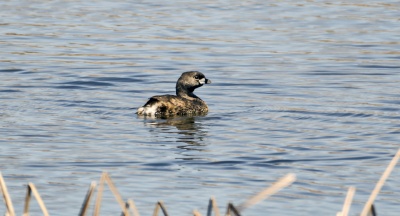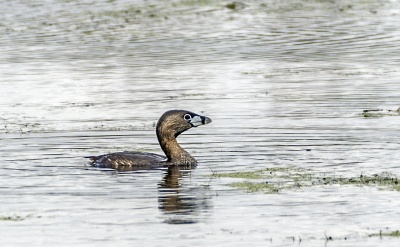Grebes
|
|
Pied-Billed Grebe
(Podilymbus podiceps)
COMMON: Migrates south for winter. Seen regularly in suitable habitat throughout Western New York during the spring, summer and fall months. Pied-billed Grebes are small, chunky swimming birds. They have compact bodies and slender necks, with relatively large, blocky heads and short, thick bills. They have virtually no tail. These are brown birds, slightly darker above and more tawny-brown on the underparts. During spring and summer, the crown and nape are dark and the throat is black. While breeding, the bill is whitish with a black band (“pied’), but otherwise is yellow-brown. Juveniles have striped faces. Pied-billed Grebes can adjust their buoyancy and often use this ability to float with just the upper half of the head above the water. They catch small fish and invertebrates by diving or simply slowly submerging. They build floating nests of cattails, grasses, and other vegetation. Look for Pied-billed Grebes on small, quiet ponds and marshes where thick vegetation grows out of the water. In winter they occur on larger water bodies, occasionally in large groups.
Horned Grebe
(Podiceps auritus)
Red-Necked Grebe
(Podiceps grisegena)

